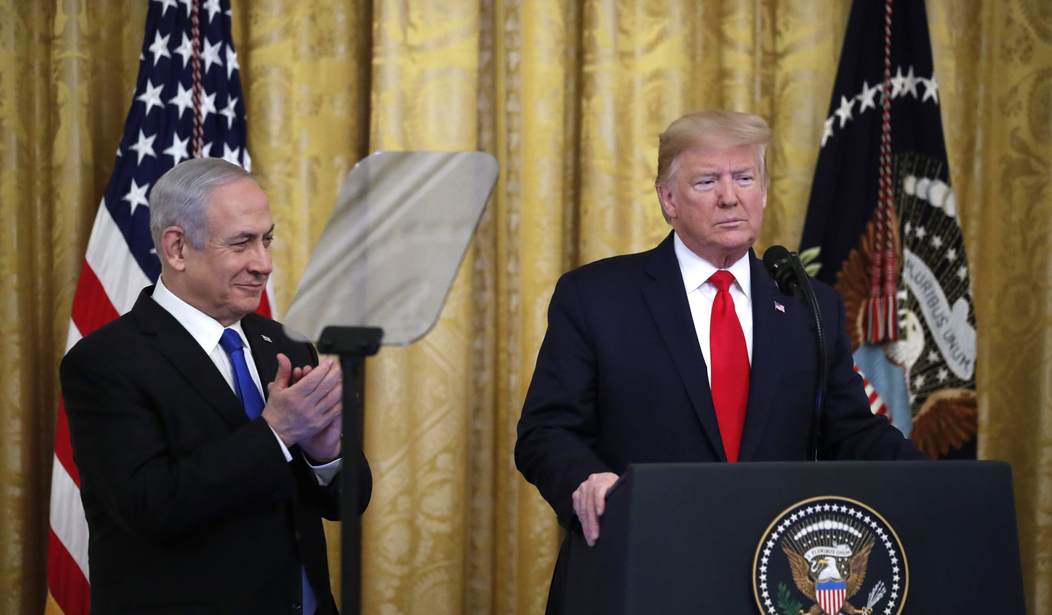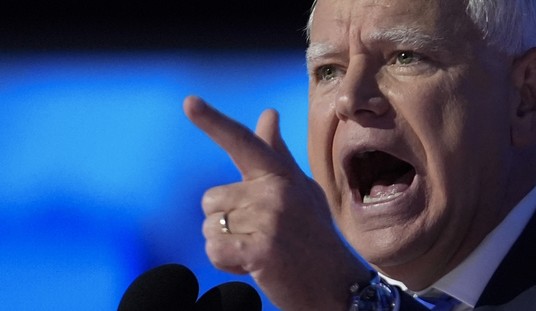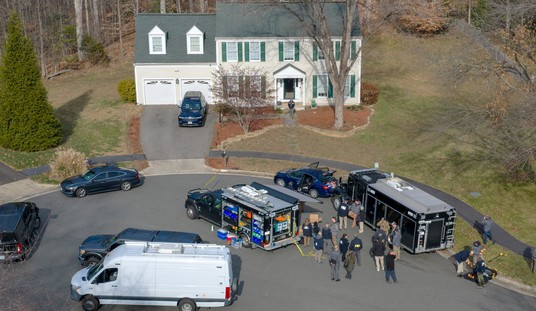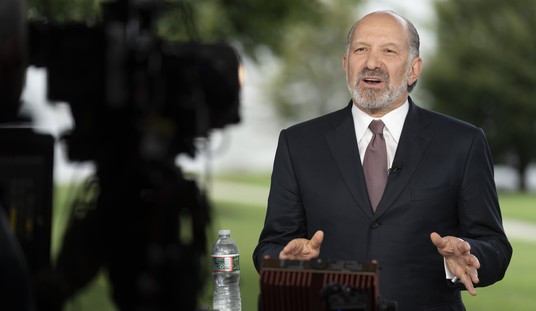Today, January 28, 2020, President Trump made history by formally announcing a plan for Israeli-Palestinian peace that breaks decisively with the previous, dogmatically upheld paradigm whereby Israel cedes virtually all West Bank land to Palestinian sovereignty, turns its capital Jerusalem into a divided, unmanageable, strife-ridden city, and reduces itself to a nonviable, indefensible entity devoid of strategic depth that is nine miles wide in its heavily populated coastal strip.
For his part, Prime Minister Netanyahu, a leader hailing from the pragmatic right, made history by formally accepting the plan as a basis for negotiations.
The plan does not, in principle, say no to the vaunted two-state solution; it modifies it in a way that could be compatible with Israeli security if the Palestinians were truly seeking accommodation (on which more later). Rather than being a sop to Israel, this plan, like previous ones, asks Israel to cede a lot—namely about 80 percent of the West Bank, the biblical lands of Judea and Samaria. But it does so with important caveats that could make that concession feasible for Israel.
First, the plan envisions full Israeli military control and political sovereignty over the Jordan Valley—the eastern border of the land between the Jordan River and the Mediterranean Sea, a natural barrier to military attack, terrorist infiltration, and arms smuggling. Second, it envisions the full demilitarization—apart from domestic police forces—of the Palestinian state.
Those two notions complement each other. Other purported peace plans have paid lip service to demilitarization of the Palestinian entity while being vague on how it could be accomplished. But full Israeli control of the Jordan Valley means Israel effectively surrounds the Palestinian state and prevents the smuggling of arms and the traffic of terrorist forces. The plan also envisions full, continued Israeli access to all Jewish holy sites in the West Bank, including the Tomb of the Patriarchs in Hebron and others.
And the plan goes still further in answering Israel’s security concerns; as summed up here: “Israel will be in control of security from the Jordan…to the Mediterranean. The IDF will not have to leave the West Bank. No change to Israel’s approach to Judea and Samaria would be needed.”
Regarding Jerusalem—long seen as one of the knottiest issues of presumptive Israeli-Palestinian peacemaking—the plan has the city remaining Israel’s “undivided” capital while providing for a Palestinian capital at the outskirts of the city; or in the document’s own words: “The sovereign capital of the State of Palestine should be in the section of East Jerusalem located in all areas east and north of the existing security barrier….”
As for settlements—possibly tied with Jerusalem as a proverbial intractable issue—Israel retains all of its West Bank settlements including those deep in the prospective Palestinian state. That sounds dangerous indeed, but the Israeli army would have access to all the settlements including the most isolated. The large settlement blocs, for their part, get incorporated into the rest of Israel.
Perhaps most dramatically, under the plan’s terms, Israel can immediately apply sovereignty to—that is, annex—the Jordan Valley and all settlements; Netanyahu says he’s going to start the process next week. Meanwhile, Israel commits to maintain the status quo—that is, not build new settlements—in all areas designated for the eventual Palestinian state.
And finally, the Palestinians are offered a big sweetener in the form of $50 billion to be infused into their new state—or as Trump put it: “There are many countries that want to partake in this. The Palestinian poverty rate will be cut in half and their GDP will double and triple.”
Is it realistic for the time being? Is it going to get off the ground?
No. The Palestinians regard Trump as anathema for such unpardonable sins as moving the U.S. embassy from Tel Aviv to Jerusalem and refusing to fund the policy of cash stipends for terrorists and their families. They don’t like demilitarization and continued Israeli military control. Yes, those are big concessions for them—but Israel, too, has to make big concessions. The difference is that Israel is willing to try such a compromise and the other side, for now, is not.
Even less amenable to the plan than the West Bank-based Palestinian Authority, of course, is Hamas, the Islamist terror organization that rules Gaza.
Why, then, is the plan important?
One reason is that it has an immediate consequence of permanent Israeli annexation of parts of the West Bank that are indispensable to its security and/or in which Israelis already live. And the other reason is that it offers a blueprint for an eventual, conceivable solution instead of one that sacrifices Israel’s security on the altar of a false peace.









Join the conversation as a VIP Member